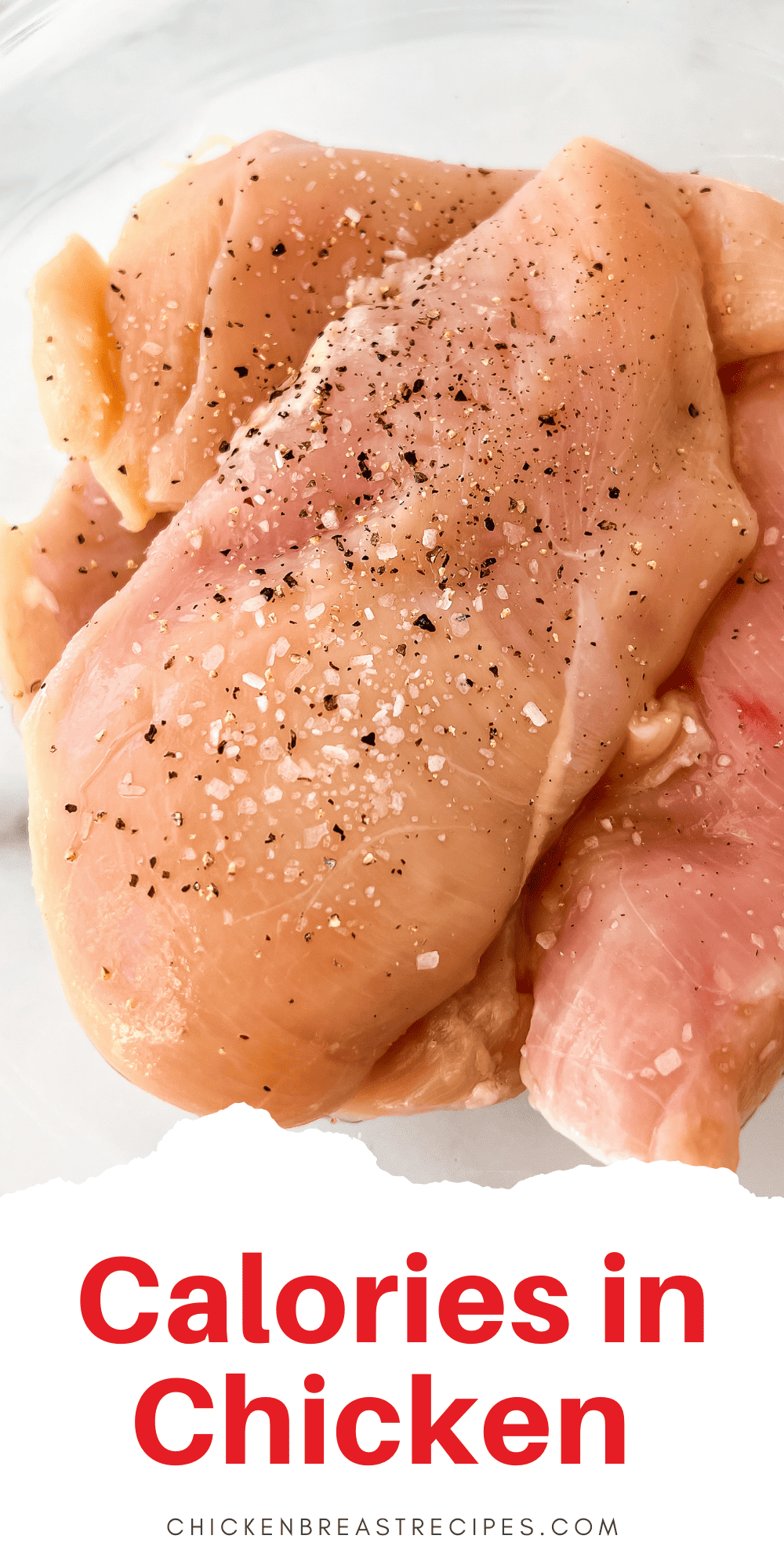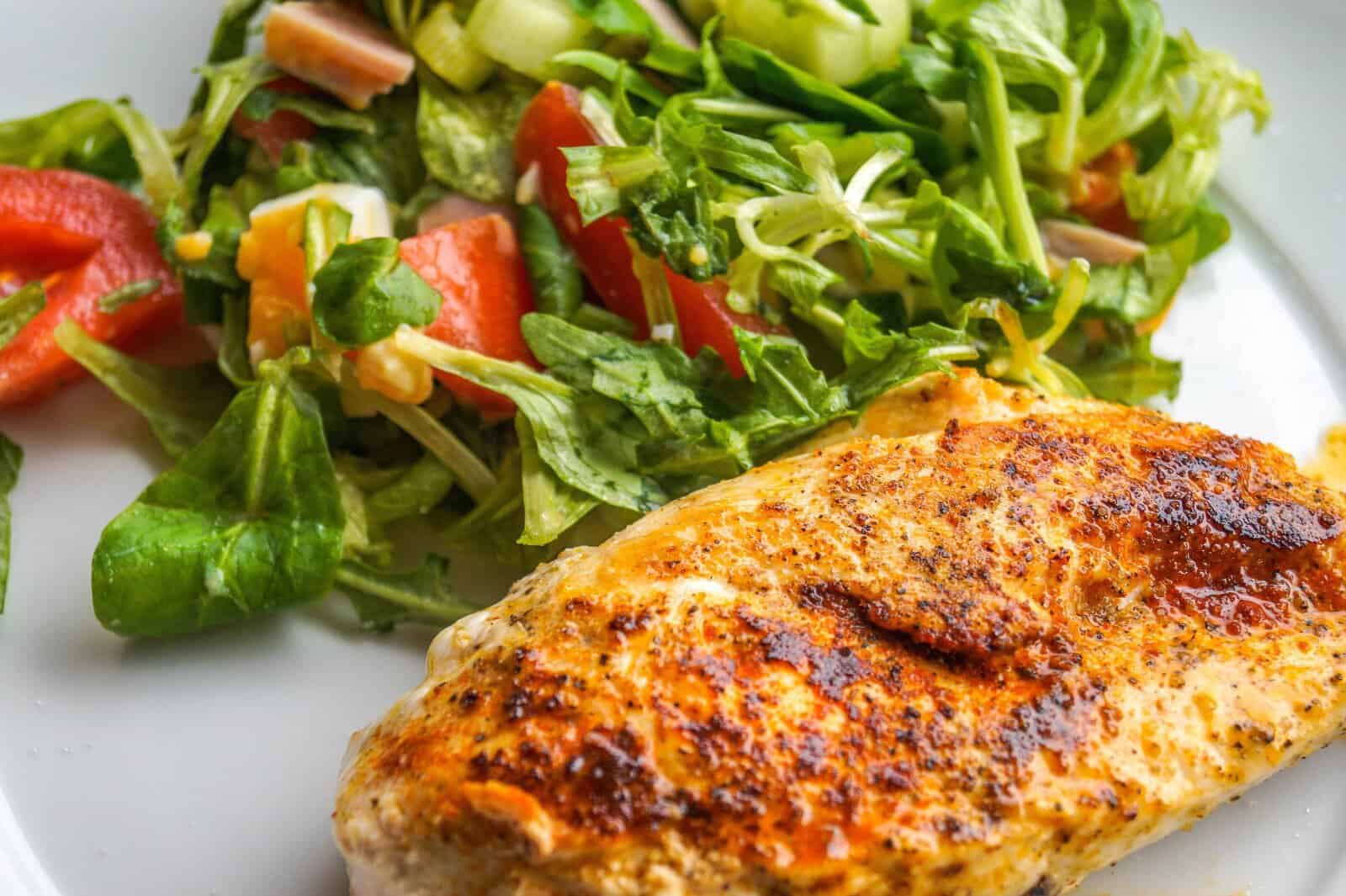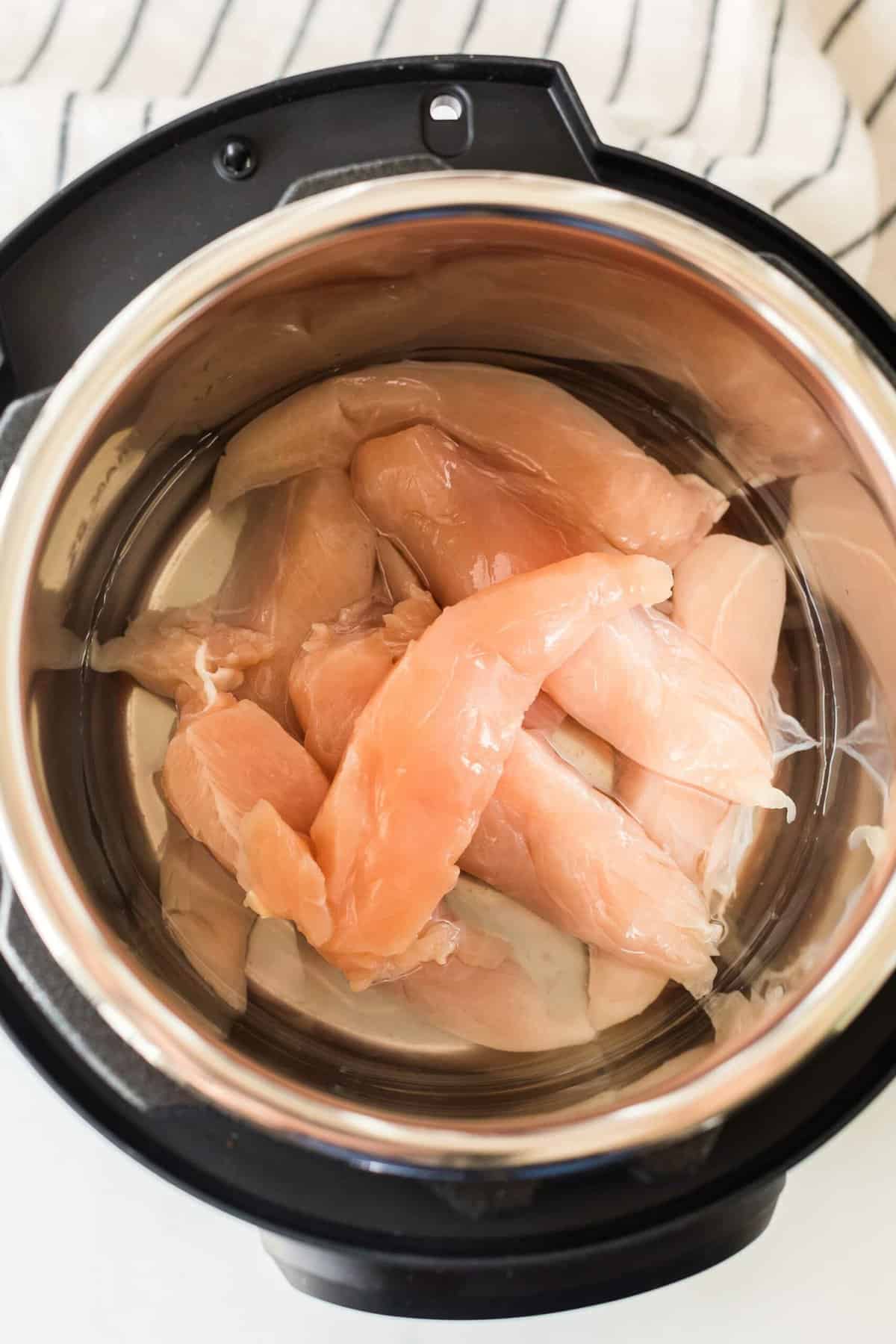Calories in Chicken Breast
Chicken breast, especially skinless, is a great way to adhere to a low calorie diet while eating food that has a high nutritional value. The low calories in chicken breast makes it an essential component of a balanced diet, particularly for those monitoring their daily calorie intake and seeking high-protein foods. Who needs red meat when you can get so much protein from delicious white meat chicken breast? Chicken breast is an excellent choice because there are only about 31 calories per ounce!

Calories in Chicken Breast (Skinless)
Here’s the calorie content in skinless chicken breast from 1 to 8 ounces:
- 1 oz of Chicken Breast: Approx. 31 calories
- 2 oz of Chicken Breast: Approx. 62 calories
- 3 oz of Chicken Breast: Approx. 93 calories
- 4 oz of Chicken Breast: Approx. 124 calories
- 5 oz of Chicken Breast: Approx. 155 calories
- 6 oz of Chicken Breast: Approx. 186 calories
- 7 oz of Chicken Breast: Approx. 217 calories
- 8 oz of Chicken Breast: Approx. 248 calories
These values demonstrate why chicken breast is considered a best bet for those seeking a lean source of protein with a low amount of fat.
Nutritional Values in Chicken Breast
Beyond its low calorie count, chicken breast is a powerhouse of nutrients:
- Protein: Provides about 31 grams of protein per 3.5-ounce serving.
- Fat Content: Contains roughly 3.6 grams of fat, making it a lean protein choice.
- Vitamins and Minerals: High in Vitamin B, phosphorus, and selenium.
Cooking Methods and Chicken Breast Nutrition
The cooking method can significantly impact the calories in chicken breast. Healthiest methods include grilling, baking, or boiling, whereas frying can increase the amount of fat and calories.

Calories in Other Chicken Parts
Chicken Wings
Chicken wings are another popular poultry option. Here’s a look at their calorie content per ounce:
- 1 oz of Chicken Wings: Approx. 43 calories
- 2 oz of Chicken Wings: Approx. 86 calories
- 3 oz of Chicken Wings: Approx. 129 calories
Chicken Thighs
Compared to chicken breast, thighs contain more fat, which affects their calorie count:
- 1 oz of Chicken Thigh: Approx. 55 calories
- 2 oz of Chicken Thigh: Approx. 110 calories
- 3 oz of Chicken Thigh: Approx. 165 calories
Calories in Chicken Skin
Chicken skin is known for its high fat content, which significantly increases the calorie count compared to the lean meat of the chicken. The exact calorie count can vary depending on the cooking method and the amount of skin consumed. However, as a general guideline:
- A single ounce (about 28 grams) of raw chicken skin contains approximately 128 calories.
- Most of these calories come from fat, with about 11 grams of fat per ounce.
It’s important to note that when chicken skin is cooked, especially if it’s fried or roasted until crispy, it can absorb additional oil or fat, which would further increase its calorie content.

Is Chicken Breast Healthy?
Low Calories for Weight Management
Chicken breast, particularly skinless, is ideal for weight loss due to its high protein and low-fat content. The calories in chicken breast (about 165 calories for a 3.5-ounce serving) helps in managing weight effectively.
Muscle Growth
Rich in essential amino acids, chicken breast aids significantly in muscle repair and growth. With around 31 grams of protein per serving, it’s a staple for those looking to increase muscle mass.
Heart Health
Chicken breast is lower in saturated fat compared to red meats, making it a heart-healthier option. Its lower fat content contributes to reduced heart disease risk.
Bone Health
Not only beneficial for muscles, chicken breast also supports bone health due to its mineral content. Regular consumption contributes to maintaining strong and healthy bones.
Rich in Essential Nutrients
Chicken breast is not only high in protein and low in calories, but it’s also rich in essential nutrients like linoleic acid, folic acid, and vitamins, including Vitamin D, which are crucial for overall physical health and brain function.
Beneficial Fatty Acids
Contains beneficial fatty acids like palmitoleic and eicosapentaenoic acids, important for maintaining healthy cholesterol levels.
Immune Support
Rich in nutrients that support the immune system, making it a good choice for maintaining overall health.
Chicken Breast in a High-Protein Diet
As one of the high-protein foods, chicken breast is an excellent source of animal protein, crucial for those who might not get enough protein from plant-based sources. It fits well into various dietary plans, including those recommended by health institutions like Mount Sinai Hospital.
Frequently Asked Questions
How much protein does chicken breast provide?
A 3.5-ounce serving of chicken breast provides about 31 grams of protein, a substantial part of the daily recommended intake for a high-protein diet.
Is chicken breast a good option compared to red meat for a heart-healthy diet?
Absolutely. Chicken breast, particularly skinless, is lower in saturated fat and cholesterol compared to most red meats, making it a better choice for heart health.
What are some healthy cooking methods for chicken breast?
Grilling, baking, and boiling are among the healthiest ways to prepare chicken breast. These methods help preserve its nutritional content while minimizing additional fat and calories.
How does chicken breast compare to red meat in terms of heart health?
Chicken breast is generally healthier for the heart compared to red meat. It has lower saturated fat and cholesterol levels, which are beneficial for maintaining heart health.
Is chicken breast low carb?
Not only are the calories in chicken breast low, it is considered a low-carb food. It contains virtually no carbohydrates, making it an ideal choice for low-carb diets. The primary macronutrients in chicken breast are protein and a small amount of fat, especially if it’s skinless. This makes it a popular choice for those following ketogenic, Atkins, paleo, and other low-carb eating plans. Chicken breast’s high protein content and low carbohydrate profile align well with the goals of these diets, focusing on reducing carb intake while maintaining adequate protein consumption.
Conclusion
The low calories in chicken breast makes it a fundamental part of a balanced diet. Its low calorie and high protein content make it an ideal choice for those focusing on weight loss, muscle building, or general health maintenance. Its versatility in cooking and comparison with other chicken parts like wings, thighs, and drumsticks highlight its position as the leanest and one of the most nutritious options available. Including chicken breast in your diet, prepared in healthy ways, aligns well with general nutrition advice and contributes significantly to overall wellness and nutritional balance.
More Chicken Education
- How to Defrost Chicken
- How Long Does Cooked Chicken Last in the Fridge?
- What is Air-Chilled Chicken?
- Is Rotisserie Chicken Healthy?
- How to Tell if Raw Chicken is Bad